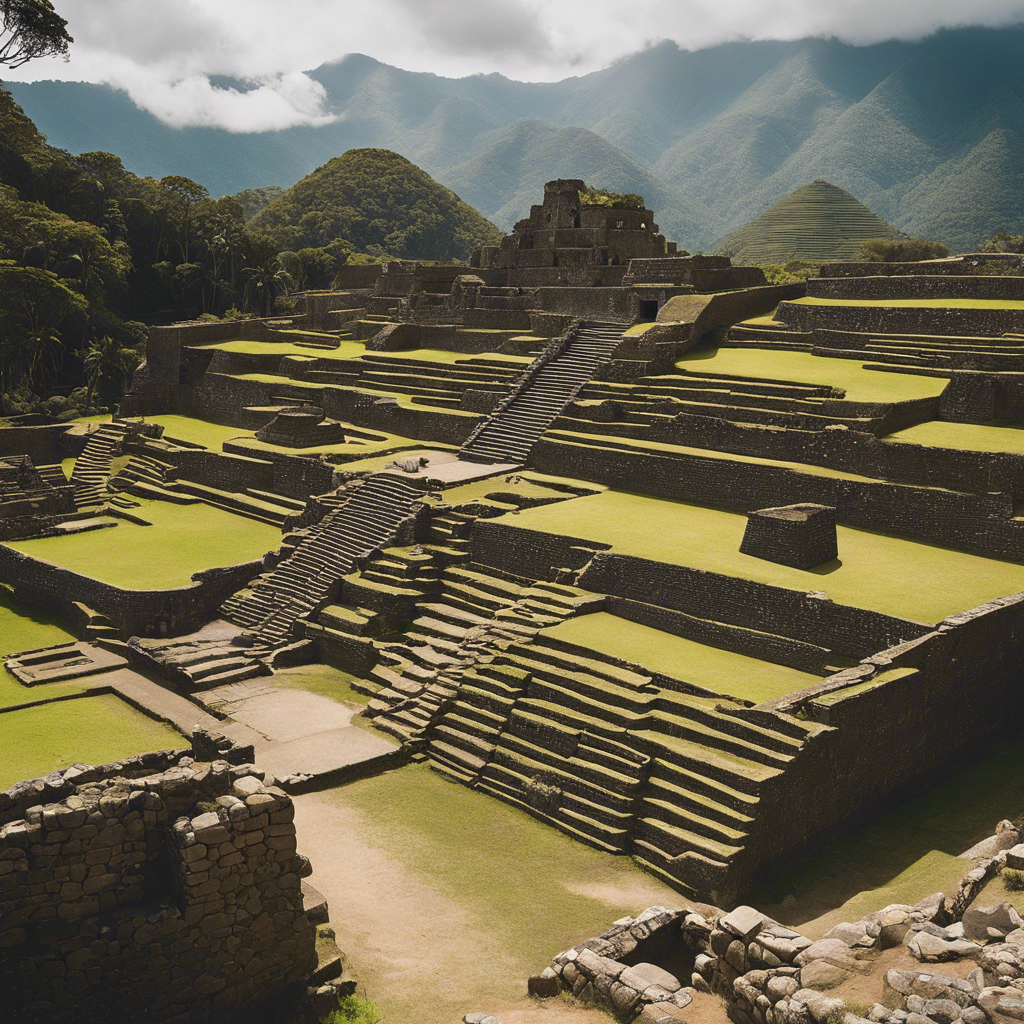The ancient world never ceases to amaze and inspire, and while Machu Picchu rightly deserves its place as one of the New Seven Wonders of the World, there are other ancient sites that are equally awe-inspiring and perhaps lesser-known. These forgotten wonders, hidden across the globe, offer a glimpse into the remarkable civilizations that once thrived and the enduring legacy they leave behind.
Take, for instance, the breathtaking city of Petra in Jordan. Carved into the very rocks itself, this ancient Nabataean metropolis boasts an impressive 2,000-year-old history. Its iconic treasury, al-Khazneh, with its intricate facade, is just one of the stunning structures that has remained remarkably preserved despite the passage of time and the elements. Then there’s the enchanting mystery of Indonesia’s Borobudur. This 9th-century Mahayana Buddhist temple, the largest in the world, is a testament to the spread and influence of Buddhism in ancient Java. The intricate stone carvings and massive stupas create a sense of serene spirituality that has drawn pilgrims and travelers for centuries.
In the heart of Mexico, Teotihuacan stands as a testament to a civilization that flourished before the Aztecs. This vast city, with its towering pyramids, was once a thriving center of Mesoamerican culture. The Pyramid of the Sun, one of the site’s most impressive structures, rivals the size of Egypt’s Great Pyramids, and the Avenue of the Dead, a 2.5-mile-long road, speaks to the city’s grand scale and importance. Unlike the well-known pyramids of Egypt, which were tombs, the pyramids of Teotihuacan were massive monuments built to honor gods and rulers and are a powerful reminder of a civilization that shaped the course of Mexican history.
No list of ancient wonders would be complete without mentioning the majestic ruins of Palenque, nestled in the jungles of southern Mexico. This ancient Mayan city, dating back to 226 BC, showcases the exquisite architectural and artistic achievements of the Maya civilization. The Temple of the Inscriptions, with its towering pyramidal structure and intricate carvings, serves as the final resting place for Pakal, one of Palenque’s most renowned rulers.
In a remote region of Ethiopia, the ancient city of Aksum reveals a rich cultural heritage. Here, towering stelae, massive obelisks, and intricate stone carvings bear witness to a once-powerful kingdom that flourished along the trade routes between Rome and India. The Obelisk of Axum, a 75-foot granite monolith, and the impressive ruins of the Palace of the Queen of Sheba showcase a civilization with a unique and distinct culture that flourished from the 1st to the 7th centuries AD.
These are just a few of the many forgotten wonders that rival Machu Picchu in their beauty, historical significance, and cultural impact. Each site offers a glimpse into the extraordinary complexity and diversity of our ancient world, serving as a reminder of the vastness of human history and the enduring power of these ancient civilizations.
Located in present-day Iraq, the ancient city of Babylon was once a bustling center of commerce, culture, and innovation. Founded over 4,000 years ago, it was here that the famous Nebuchadnezzar II built the Hanging Gardens of Babylon, one of the original Seven Wonders of the Ancient World. While the gardens themselves may have been lost to time, the city’s ruins still stand as a testament to its former glory. The Ishtar Gate, with its vivid blue glazed bricks and depictions of dragons and bulls, offers a glimpse into the city’s once majestic beauty.
Deep in the jungles of Cambodia lies the ancient city of Angkor, a sprawling complex of temples and monuments that served as the heart of the Khmer Empire from the 9th to the 15th centuries AD. The most famous of these temples, Angkor Wat, is a stunning example of classical Khmer architecture with its intricate carvings and towering spires. But beyond this iconic structure lies a vast network of ancient waterways, reservoirs, and temples that speak to the empire’s hydrological prowess and deep spiritual traditions.
Perched atop a triangular plateau where the states of Mexico, Puebla, and Tlaxcala meet is the ancient city of Cantona. This magnificent site, built by the unknown Otomi people, is believed to be one of the largest pre-Columbian cities in Mexico, covering an impressive 12 square miles. What sets Cantona apart is its unique layout and advanced infrastructure, featuring an extensive network of cobbled roads and over 20,000 individual patios or play areas, indicating a highly organized and complex society.
Located in the ancient region of Lydia in present-day Turkey, the city of Sardis was once a thriving center of commerce and culture, boasting one of the earliest mints and coinages in the ancient world. As the capital of the Lydian Empire, it was a place of immense wealth and power, with a rich history spanning over 2,500 years. Today, the site reveals impressive remnants of its former glory, including the restored gymnasium and bath complex, as well as the magnificent Royal Road, lined with statues and once adorned with gold and silver.
These forgotten wonders, and many others like them, offer us a chance to explore and understand the diverse cultures and achievements of our ancient ancestors. Each site, with its unique story and legacy, reminds us of the richness and complexity of human history, and the enduring power of places that continue to inspire and captivate us.

